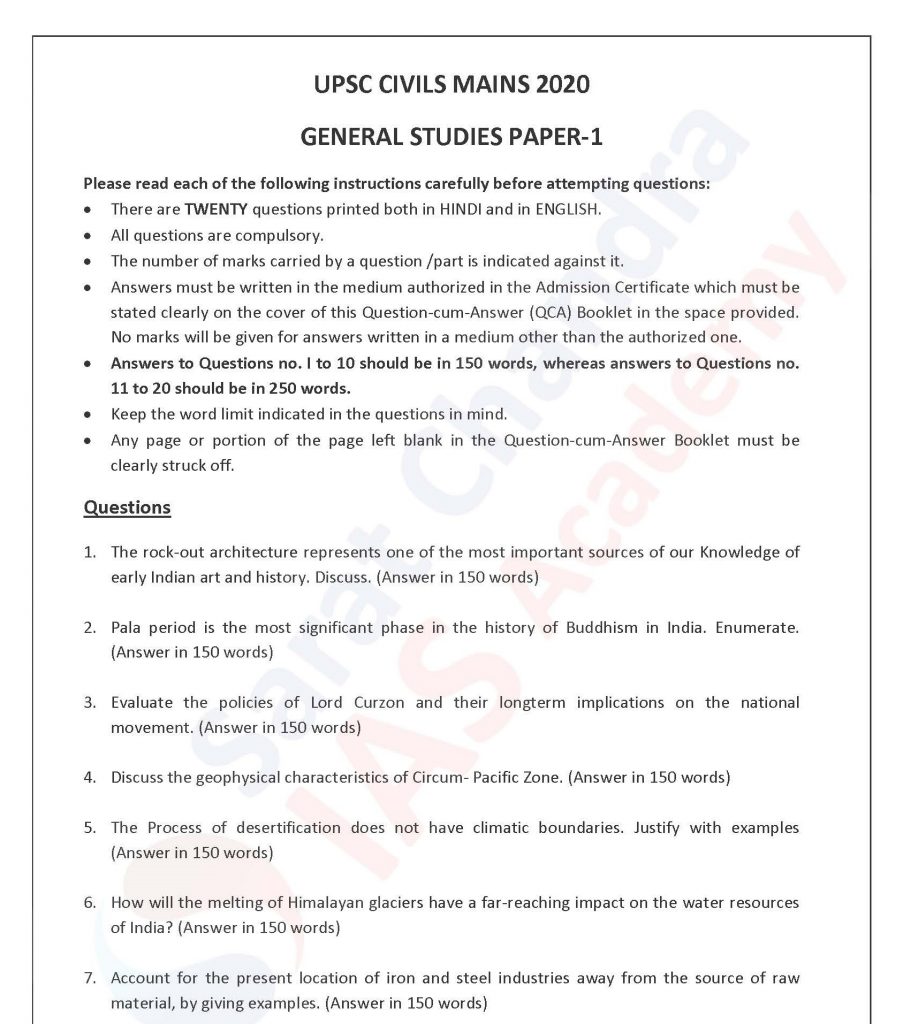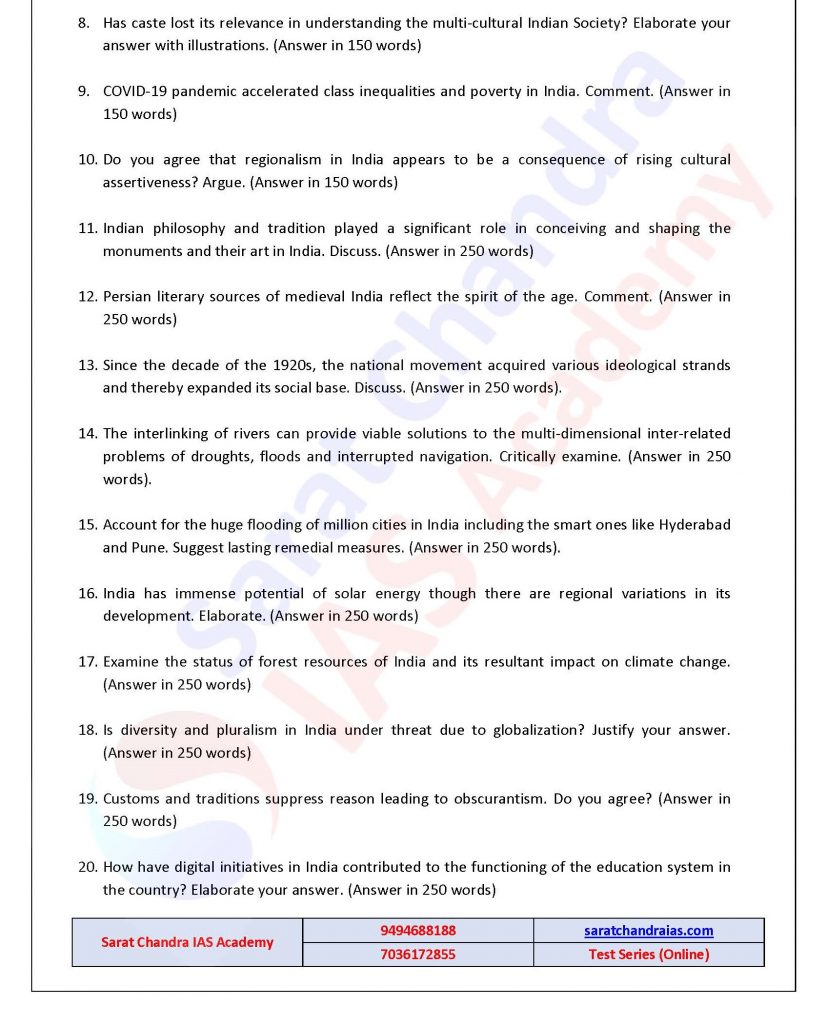UPSC Civils Mains 2020 General Studies Paper-1
Please read each of the following instructions carefully before attempting questions:
There are TWENTY questions printed both in HINDI and in ENGLISH.
All questions are compulsory.
The number of marks carried by a question /part is indicated against it.
Answers must be written in the medium authorized in the Admission Certificate which must be stated clearly on the cover of this Question-cum-Answer (QCA) Booklet in the space provided. No marks will be given for answers written in a medium other than the authorized one.
Answers to Questions no. I to 10 should be in 150 words, whereas answers to Questions no. 11 to 20 should be in 250 words.
Keep the word limit indicated in the questions in mind.
Any page or portion of the page left blank in the Question-cum-Answer Booklet must be clearly struck off.
Questions
The rock-out architecture represents one of the most important sources of our Knowledge of early Indian art and history. Discuss. (Answer in 150 words)
Pala period is the most significant phase in the history of Buddhism in India. Enumerate. (Answer in 150 words)
Evaluate the policies of Lord Curzon and their longterm implications on the national movement. (Answer in 150 words)
Discuss the geophysical characteristics of Circum- Pacific Zone. (Answer in 150 words)
The Process of desertification does not have climatic boundaries. Justify with examples (Answer in 150 words)
How will the melting of Himalayan glaciers have a far-reaching impact on the water resources of India? (Answer in 150 words)
Account for the present location of iron and steel industries away from the source of raw material, by giving examples. (Answer in 150 words)
Has caste lost its relevance in understanding the multi-cultural Indian Society? Elaborate your answer with illustrations. (Answer in 150 words)
COVID-19 pandemic accelerated class inequalities and poverty in India. Comment. (Answer in 150 words)
Do you agree that regionalism in India appears to be a consequence of rising cultural assertiveness? Argue. (Answer in 150 words)
Indian philosophy and tradition played a significant role in conceiving and shaping the monuments and their art in India. Discuss. (Answer in 250 words)
Persian literary sources of medieval India reflect the spirit of the age. Comment. (Answer in 250 words).
Since the decade of the 1920s, the national movement acquired various ideological strands and thereby expanded its social base. Discuss. (Answer in 250 words).
The interlinking of rivers can provide viable solutions to the multi-dimensional inter-related problems of droughts, floods and interrupted navigation. Critically examine. (Answer in 250 words).
Account for the huge flooding of million cities in India including the smart ones like Hyderabad and Pune. Suggest lasting remedial measures. (Answer in 250 words).
India has immense potential of solar energy though there are regional variations in its development. Elaborate. (Answer in 250 words)
Examine the status of forest resources of India and its resultant impact on climate change. (Answer in 250 words)
Is diversity and pluralism in India under threat due to globalization? Justify your answer. (Answer in 250 words)
Customs and traditions suppress reason leading to obscurantism. Do you agree? (Answer in 250 words)
How have digital initiatives in India contributed to the functioning of the education system in the country? Elaborate your answer. (Answer in 250 words)


